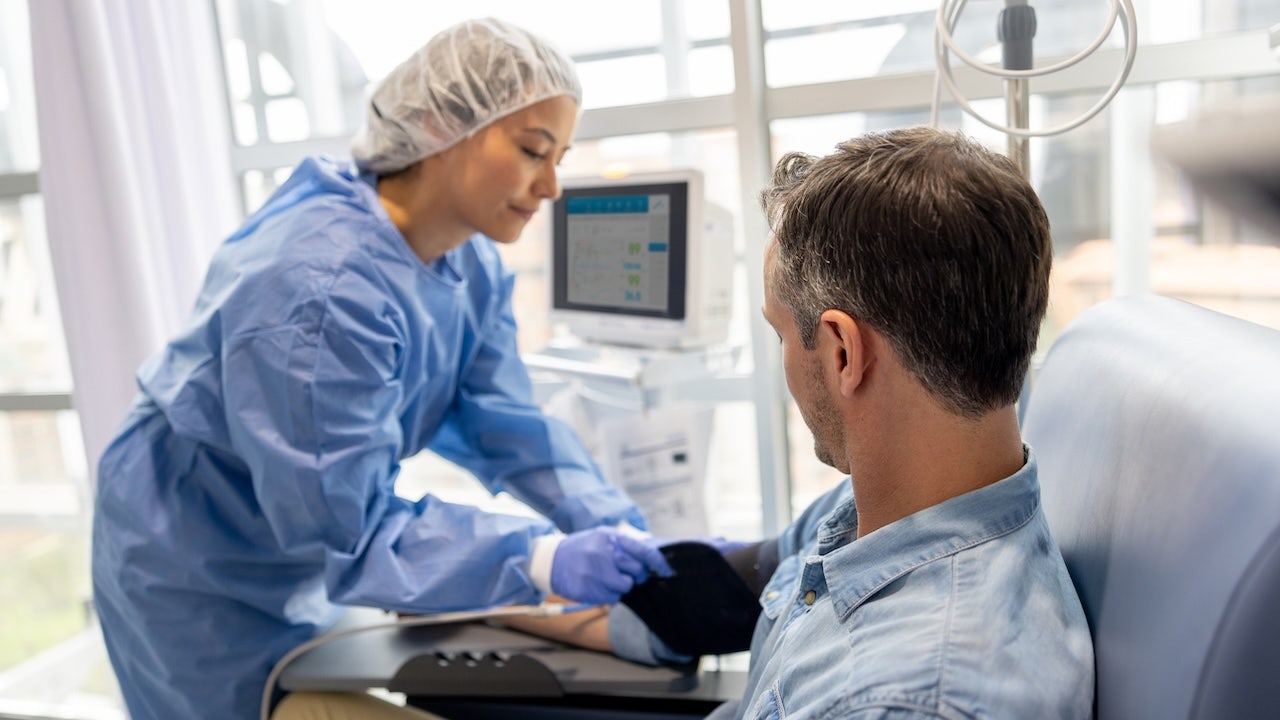Dizziness can be a serious health issue. Experts say we need to learn more about it

The Current25:55Why Canadians need more help dealing with dizziness
Joyce Pinsker couldn’t understand what was happening when she felt seriously dizzy for the first time.
“It was Christmas [in 2001], and I was bustling around getting ready, bent over to get something out of the bottom of the fridge, and I was instantly really, really dizzy,” Pinsker told The Current’s host Matt Galloway.
“I couldn’t walk, and it passed in about a minute, and I thought, ‘what’s that?'”
When Pinsker felt the alarming sensation again a few days later, she went to her family doctor and was diagnosed with a vestibular disorder.
The non-profit charity Balance & Dizziness Canada estimates that over six million Canadians will experience dizziness at some point in their lives, and says the symptom is usually an indicator of a problem with the vestibular system.
The vestibular system helps maintain a sense of balance, and its main parts are in the inner ear.
“It sends information to the brain, as to whether we are moving or not,” said Erica Zaia, a vestibular audiologist in Vancouver, and president of Balance & Dizziness Canada.
“When there is a disruption in the [inner ear’s] sensors, then dizziness can occur.”
Common causes for these disruptions can include having poor circulation in the ear, head injuries, infections and medicines with side effects that damage the inner ear.
Zaia says dizziness can affect many aspects of someone’s life, including their productivity at work, social interactions and relationships, travel and cognitive ability.
“I have many patients, and usually intelligent women who are high achievers. They sit down and cry, and say, ‘All of a sudden I feel I’m dumb, I cannot think through, I cannot function intellectually,'” said Zaia.
Despite its prevalence and adverse impact on a person’s quality of life, experts and patients say there is a current lack of awareness towards dizziness disorders that prevents patients from receiving the treatment they need.
Not taken seriously
Although Pinsker’s family doctor had come across dizziness disorders before, she said that “taking symptoms seriously right from the beginning is something that needs to be done by more general practitioners.”
Due to the nature of dizziness, Zaia says that patients often feel that they are dismissed by health-care professionals.
“[Patients] say, ‘I look fine, but I’m not fine. I am really, really unwell. It is an invisible disorder where other people just don’t know how awful it feels to be in your head, and to live in your body and try to move around,” she said.
At the same time, patients can also dismiss the symptoms themselves.
“As a general rule, many people live with it. It doesn’t seem as serious. It doesn’t seem to have the same optics … [such as] with cardiovascular disease, transplantation,” said Dr. John Rutka, an otolaryngologist in Toronto.
Rutka runs the Hertz Clinic for Meniere’s Disease and Vestibular Dysfunction at Toronto General Hospital.
It’s a “dizzy clinic” with a clinical team that’s multidisciplinary to address the complexity of dizziness disorders, including neurotologists, neurologists, psychiatrists and physiotherapists.
“We do a full assessment of that individual. We leave no stone unturned,” said Rutka.
Complexity of dizziness
Compared to other organs in the body, the invisibility of the vestibular system — its tiny size and obscured location, has caused it to be a subject in the medical field where understanding about it is continuously developing and evolving.
In fact, medical professionals today are still learning new things about the system through discoveries that’s made possible by advancements in technology. More break-throughs in the field could help contribute to better diagnosing and treating patients with dizziness disorders.
“The vestibular system is meant to be silent in the body. It is meant to be effortless [like] I just stand up and walk,” said Zaia. “That is in part why many healthy people and even health-care professionals don’t always think about it.”

In addition to its physical make-up that makes the system complicated to understand, the way it functions is also intricate.
“It starts with the inner ear sensors for balance, [but] it also communicates with the eyes, and the body and the brain for balance.”
Zaia called for more health-care funding from the provincial government to establish more comprehensive vestibular testing, diagnosis, treatment and rehabilitation centres, and more support from the federal government as well, to assist each province and territory.
She also says more education programs about dizziness could encourage medical workers to better specialize in the field, and also contribute to more advances in understanding vestibular disorders.
‘That’s when I got hope’

Tammy Spencer is from Timmins, Ont., and she is a patient of Rutka. After an assessment from Rutka, she was introduced to Shaleen Sulway, a physiotherapist from the clinic.
They’ve been working together since last October where Sulway has taught and engaged Spencer in balance and eye exercises.
Under her care, Spencer said she has seen improvements in her symptoms.
“Last year, it felt like 100 per cent of the time I was in a very deep dream, or highly intoxicated,” said Spencer. “I thought to myself, ‘how am I ever going to be normal again?'”
After she met Sulway through the clinic, Spencer said, “That’s when I got hope. If somebody understands, then they can help me, and she did. I’m looking forward to 100 per cent recovery.”
“I’m only 46, I want to live my life like I used to. It’s just that I have to get over this hump, that’s all.”




